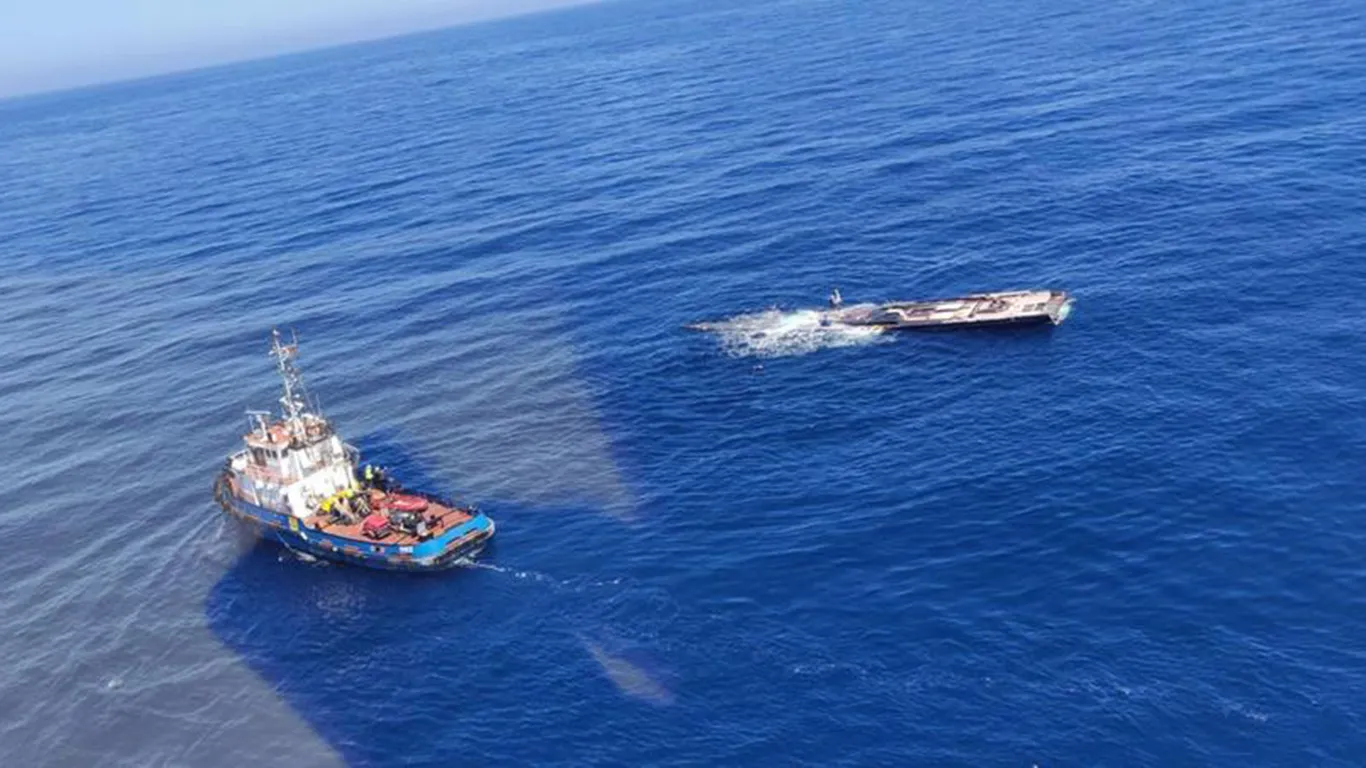On 26 May 2019 the superyacht ‘My Song’ fell from the deck of the cargo ship Brattinsborg into the Mediterranean Sea, while on transit from the Caribbean to the Balearics, thus becoming the type of statistic any owner wants to avoid.
According to media sources the transport company Peters and May, on learning of the incident, immediately employed salvage procedures with eye contact of the stricken vessel maintained until air and sea salvage was commenced. It’s also understood that thecradle ‘collapsed’ resulting in the vessel’s fall, the cradle was owned by the yacht, capable of sea transport and assembled by the yacht’s crew. The next steps will be a complete investigation to ascertain the actual cause of the incident so insurance companies can settle their accounts.
Exposure to Risk
While yacht transport companies may argue that shipping yachts is ‘as safe as houses’ its not without risk even when using experienced operators. In considering these modes of transport yacht owners need to understand their exposure to risk, what is covered and whether additional insurance is required.
What makes the My Song incident interesting is that generally most of the risk is at the beginning or end of the shipping process where cranes and trucks are employed to lift and shift yachts. Whereas, loss at sea mainly occurs due to acts of god such as typhoons that may result in the pitch and roll from rough seas loosening lashings. In limiting loss the yacht owner must firstly consider the appropriate type of shipping.
On ship as freight
Yachts are fragile goods and shipping requires significant preparation with components being removed such as rigging and masts, yachts braced and custom-built cradles being constructed. There may also be some significant limitations depending on the location where you intend to ship from and the types of break-bulk services that operate from these ports.
The main consideration is size, like any other cargo yachts are charged on a per cubic metre basis, so space is at a premium. Smaller yachts with a beam of 7.5 feet or less may be able to be transported in a standard forty foot shipping container. This is by far the cheapest option and if the yacht is expertly packed it carries the least amount of risk. Larger yachts may be stored underdeck if available, providing the cargo ship boasts roll-on roll-off (ro/ro) facilities. However if a yacht is higher than 4.2 metres it will usually have to be craned and transported as deck cargo, bringing with it added costs and security concerns.
Semi-submersible ships
Another option is to secure a place on a semi-submersible sail-in sail-off vessel. This is arguably the simplest and most secure method of transportation. Similar to a dry-dock, yachts are able to sail directly into a flooded cargo hold within the ship, hull supports are welded into place, and the ship refloats to lift the yachts out of the water.
Shipping Agents
Due to the many different shipping options, and the number of parties handling the yachts, questions of liability and insurance often come down to precise contractual terms, which will usually depend on who is arranging the shipping. Because of the inherent difficulties in navigating the complex and technical world of commercial shipping, it is virtually impossible to arrange a once-off delivery on your own. Many logistics companies and shipping agents offer quotes for complete shipping services.
In essence there are several layers of contracts that exist for example the parent shipping company may not own the ship thus there may be charter agreement with a ship owner and in all instances insurances will carried by these parties limiting their liability. On top of this, international shipping laws protect captains and shippers from being sued provided they have met the regulatory guidelines. In essence this freedom allows commercial shipping to operate with confidence to maximise the movement of goods around the world and facilitate business. So where does that leave the yacht owner?
Limiting Liability
The yacht owner will need to enter into a shipping agreement with shipper, charterer or ship owner, whatever the case maybe. An Insurance policy will cover the shipper in the event of lose or damage while the shipper is responsible for the yacht. However, it’s advised that apart from the shipping insurance that additional comprehensive insurance is held that covers all aspects of shipping, including third parties.
This is generally a case of checking the yacht’s existing policy to make sure it indemnifies the owner in respect to all aspects of shipping liability from the yacht leaving its home mooring to delivery at the final destination marina or mooring. As they say the devil is in the detail so understanding what, when and who is covered by the insurers cannot be emphasised enough. While contacting the insurer to update the yachts’ policy may be required, it may also be the case that independent legal advice to review all shipping and insurance documents be sought. This sounds like over kill but in the case where your yacht does become a statistic its better to be fully covered leaving the dispute to the insurer’s lawyers.
Turning our attention to My Song and the little that is known at this stage, it’s difficult to comment on how the insurers will deal with this matter. However, it goes without saying that insurers will be looking closely at their policies to see how they may be implicated in the final wash given the apparent involvement of the My Song crew and use of the yacht’s own cradle.
Given the complexities of this area of law this article only provides a very general understanding of shipping and insurance and its advised that if your considering this mode of transport that experienced shipping agents, lawyers and professional services alike are consulted and engaged from the start.

